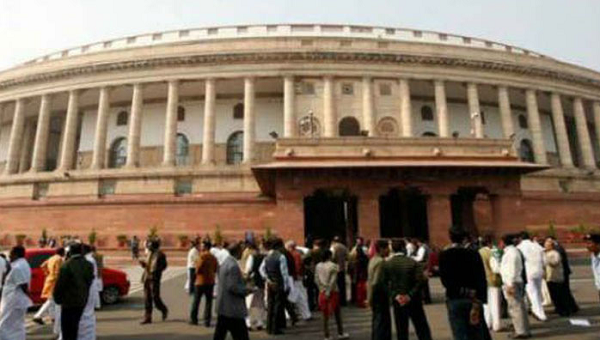
by admin | May 25, 2021 | Opinions

Frank F. Islam
By Frank F. Islam
On May 23, the seven-week long Indian election process will come to an end. The votes will be counted and a winner will be declared. No matter who wins, the real winner will be Indias democracy. I say this as an Indian American who has had the privilege of living in the two largest – and, I would add, greatest – democracies in the world. I have watched in awe as this years election in India has unfolded. It brought back memories of Indias national election of 2014. The scope and size of that election was unrivalled in the history of the world.
There were 815 million eligible Indian voters at that election. The registration for that election was more than 100 million voters higher than the 2009 election – an increase of almost 15 per cent. The election process required approximately 1.1 million government workers and 5.5 million employees to help voters at 1.4 million voting machines in 9,30,00 polling stations. The voter turnout of over 66 per cent was the highest in the history of India’s national elections.
The inspiring thing about that voter registration and turnout is that the government worked diligently to make it happen. In the lead-up to that election, the Election Commission implemented a national initiative called Systematic Voters Education and Electoral Participation (SVEEP). According to H.S. Brahma, in the run-up to the election, SVEEP did work “on a massive scale to educate voters, especially the vulnerable ones – illiterate, poor, marginalized – as well as women and youth.”
Fast forward to this year’s elections. There are approximately 900 million eligible voters. And, it is reported, that there are at least 11 million poll workers and 2.3 million electronic voting machines.
And, once again, India is doing everything it can to ensure that all voters who desire to vote can do so regardless of their literacy level of location. In an article for the Washington Post, Niha Masih highlights that for the first time India’s voting machines have a candidate’s photo as well as the party symbol. India’s seven national parties and sixty-four state parties have their own fixed symbols. The Election Commission has a pool of “free” symbols” that can be used by the thousands of other, smaller party organizations across the country. Another article tells the wonderful true story of a team of election workers who traveled 300 miles over mountainous roads and shaky bridges for a period of four days to set up a polling booth for one voter. This tale says it all about the desire of India to enfranchise its voters. Its focus is to expand the voting pool and to increase participation. That stands in stark contrast to the emphasis in the United States in recent national election cycles which has been to attempt to restrict and/or reduce participation.
According to New York University’s Brennan Center for Justice, since the 2010 elections, 25 states have put new restrictions in place to make it harder to vote; 14 of those states had new voting restrictions during the 2016 presidential election contest between Donald Trump and Hillary Clinton.
This comparison shows that India’s election process empowers voters. As Ornit Shani, a scholar at the University of Haifa, Israel, that approach can be traced back to the founding of the country. In her book, How India Became Democratic: Citizenship and Making the Universal Franchise details how India was established at the outset as a country empowering its diverse population as voters.
In his recent article for Foreign Affairs, Ruchir Sharma cites that diversity as a strength observing that “India’s diversity is also a source of political resilience, as strong subnational identities provide a check on ethnic and religious nationalism.” He ends that article by asserting, “At a time when democracy is said to be in retreat around the world it is still thriving in India.”
It makes me even more proud that India with its elections is teaching a lesson in democracy from which the U.S. and the world can learn. That lesson is that enhancing and enabling citizen participation in the political and electoral process makes a democracy more vital and vibrant.
I say thank you for that lesson and for making May 23 a day to celebrate the Indian democracy. It is not perfect – far from it. But India’s democracy shines as a beacon of light in a world that is becoming increasingly darker. India has the potential to become a champion of democracy around the globe. If it realizes that potential it will bring about a new dawn for democracy in the 21st century.
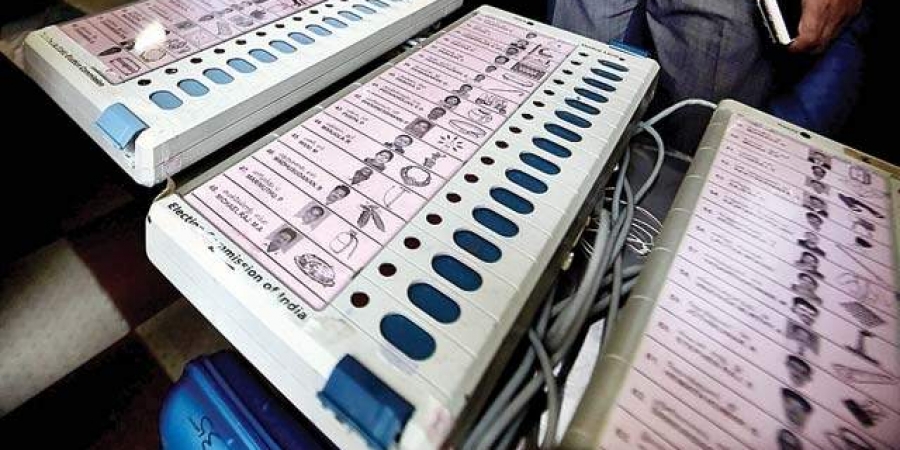
by admin | May 25, 2021 | Uncategorized

New Delhi : The Election Commission on Tuesday issued a notification for the second phase of the seven-phased Lok Sabha elections, kicking off the process of filing of nominations for another 97 constituencies across 13 states and Union Territories.
Voting in the second phase will take place on April 18, said the notification, which comes a day after the poll panel notified the first phase covering 91 constituencies.
The Lok Sabha has 543 elected seats and the polls will be held in seven phases from April 11 to May 19. The results would be declared on May 23.
According to the EC notification, nominations for the second phase would be accepted till March 26, while March 29 is the last date for withdrawal of candidature.
While all 39 Lok Sabha constituencies of Tamil Nadu will go to the polls on April 18, the other states where voting will take place in this phase include Karnataka (14 seats), Maharashtra (10), Uttar Pradesh (8), Assam (5), Bihar (5), Odisha (5), Chhattisgarh (3), West Bengal (3), Jammu and Kashmir (2), Manipur (1), Tripura (1) and Puducherry (1).
–IANS
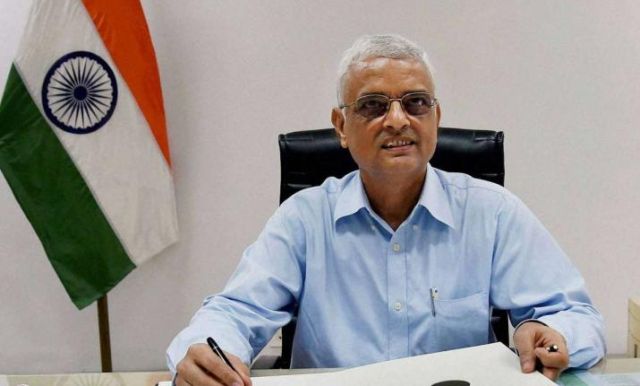
by admin | May 25, 2021 | Interviews, Politics
 By V.S. Chandrasekar & Mohd Asim Khan,
By V.S. Chandrasekar & Mohd Asim Khan,
New Delhi : Ruling out the possibility of going back to paper ballots in place of electronic voting machines (EVMs), the Election Commission says it is working on a formula that will “minimise errors and maximise confidence” of the stakeholders in the working of the electronic voting machines.
It also says simultaneous elections to the Lok Sabha and the assemblies are not possible now given the legal constraints. It says no political party has demanded going back to ballot papers at an all-party meeting with the Election Commission recently.
“I have been reading in the newspapers. That’s why it must be coming in the media. Some editorials have come, some lead articles have come (about EVMs) that something which has eradicated booth capturing has eradicated the muscle power. The EVMs have eradicated that stigma on the our voters that they cannot even vote; that so many votes are invalidated. Even at times victory margin is less than number of invalid votes.
“So all these issues have been flagged by even media that there is no point going back to that (paper ballots). Why do you want to bring back those days? When people never used to talk about campaigner or anything, now they would talk how many booths did you capture. If you captured 83 and I have captured 150. I am going to win,” Chief Election Commissioner (CEC) O.P. Rawat told IANS in an interview at his office at Nirvachan Sadan, the headquarters of the Election Commission of India.
He was replying to a question on the opposition demand for going back to the paper ballot system in view of the apprehensions that the EVMS could be manipulated, an allegation some major opposition parties have levelled in the past few years after electoral defeats.
The parties also demanded increasing the sample number of Voter Verifiable Paper Audit Trail (VVPAT) for physical counting to cross check whether the vote had gone to the intended candidate.
Rawat also said no party demanded dispensing with the EVMs and a total return to the paper ballots during the all-party conference convened by the Election Commission last month.
“Yes, I have been reading in the newspapers,” he said when told about the claim of some leaders of having made such a demand.
“Media has been telling that and, therefore, the Election Commission is just acting as the constitutional authority to conduct the elections and in the process the Commission has to keep all major stakeholders satisfied. Therefore, we are trying to convince them since in the all-party meeting they all said that the number (of VVPATs) should be increased (for taking up sample counting).”
The CEC said at the all-party meeting basically the points raised by parties included that either more slips of VVPATs should be counted because right now the counting is done from only one randomly-selected polling station.
“So as of now, VVPATs will be counted in 4,120 Assembly constituencies that form part of the 543 Lok Sabha constituencies. But since they (parties) have suggested that more should be counted, the Commission is seized of the matter. The Commission is examining.
“There are two issues — one is our stakeholders should be happy and satisfied but at the same time, since we are operating in a global environment it will be decided whether it (sample) should be one per cent, 10 per cent or 12 per cent. It will be done on a scientific basis to minimise the error and maximise the confidence level of the stakeholders…..so statistically, it will be a sample size which minimises errors and maximises the confidence level to 99.9999 per cent…that kind of thing the Commission is looking for,” the CEC said.
Asked what would be the ideal size of samples, he said, “if that was known, we would have ordered that. We need statisticians to work on this. So I can’t predict how many days it will take but it will take more days.”
To another query, Rawat said “the issue was not of practicability but a solution that is acceptable to all and whenever this solution is available, say within the next two-three weeks, the Commission will take a decision.”
But, he said, he cannot say definitely whether the new solution could be applied in the coming round of Assembly elections in four or five states.
Asked about the demand from opposition parties for a cap on the expenses on party account, Rawat said there can be no different views on this. The Commission has already submitted a reform proposal that would like a ceiling on the party expenditure like there is a ceiling on candidates’ expenditure.
“But this question should be put to all the parties. Because it is not that this party is in power for eternity. you were in power…you could have brought it,” he said.
Asked about the simultaneous elections being pushed by BJP, the CEC said it was not possible given the current laws as the Constitution had to be amended and there should be amendments in other electoral laws.
He said even the Law Commission has said what the Election Commission had said in 2016. “But the Election Commission had said this in 2015 when we were asked that you (Parliament) will have to amend the Constitution. Sections of the Representation of the People Act have to be amended since you have to provide for logistics.
“Logistics would have three issues. One is the number of machines, number two Central Armed Police Force because generally political parties these days insist we don’t have any faith in the state police. So if you want simultaneous elections you will need more whatever is available now will not do. So more of that, then more of vehicles, more of police personnel, more of all that. So those are logistical issues that will have to be addressed before doing it.”
(V.S. Chandrasekar can be contacted at chandru.v@ians.in and Mohd Asim Khan at mohd.a@ians.in)
—IANS
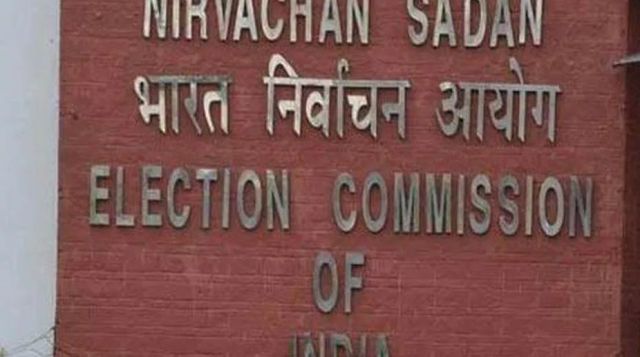
by admin | May 25, 2021 | News, Politics
 Gandhinagar : Gujarat’s chief electoral officer B.B. Swain on Wednesday said the pll panel will be using more than 50 lakh students of tate government schools to receive a pledge from their parents to exercise their voting rights in the forthcoming assembly election.
Gandhinagar : Gujarat’s chief electoral officer B.B. Swain on Wednesday said the pll panel will be using more than 50 lakh students of tate government schools to receive a pledge from their parents to exercise their voting rights in the forthcoming assembly election.
The commission will also be using the eminent personalities of 33 districts as district election icons for spreading awareness about the election. It will be using a newly developed system called Electronically Transmitted Postal Ballot System (ETPBS) for service voters, he said.
Addressing the media here, Swain said: “As earlier, we have prepared a pledge letter for the parents of the over 50 lakh students of the state, to pledge for exercising heir voting rights. We have developed a two page letter, with one for the pledge and the other for informational purposes for voting awareness.
“The students will take the signed pledged letter, submit it to their schools and it will be forwarded to the commission. The other section will be torn off the perforation and serve as informational help to the voters. This way we will be reaching out to over 50 lakh households of the state.”
The parents will have pledge for the parents to have their names registered with the electoral roll, exercising their voting rights without or under any pressure or temptation, and using the None Of The Above (NOTA) option if they did not chose any candidate. The torn off page will have pictorial depiction of the EVMs and an explanation of the Voter Verified Paper Audit Trail (VVPAT).
The poll panel has assigned renowned cricketer Chaiteshwar Pujara as the state election commission icon as well budding young tennis player Ankita Raina. It has also selected various eminent personalities from all across the state to be district icons to help spread awareness regarding the election.
The service personnel from various fronts like the government, police and military forces were able to exercise their voting rights only through postal ballot till this time, but now the Election Commission has developed a new electronic system for them.
“The Electronically Transmitted Postal Ballot System (ETPBS) is specifically designed for such personnel who are associated with the electoral process and will be occupied in the poll process on the election day. Right now the commission is carrying out the registration of such service voters and it will continue till the date of the filling of the nomination deadline for candidates,” said Swain.
Swain also said that from Thursday, general observers for the first phase of the elections will start arriving in the state and by Nov 21, all the 100 general observers from various cadres of the IAS services, 66 Indian Revenue Services personnel as expenditure observers and 36 Indian Police Service personnel as police observers”, will be here.
He also said that till now, the commission has disposed of eleven cases of the violation of the model code of conduct. “None of them have any significance and all of hem had been filed by individual citizens,” said Swain.
—IANS
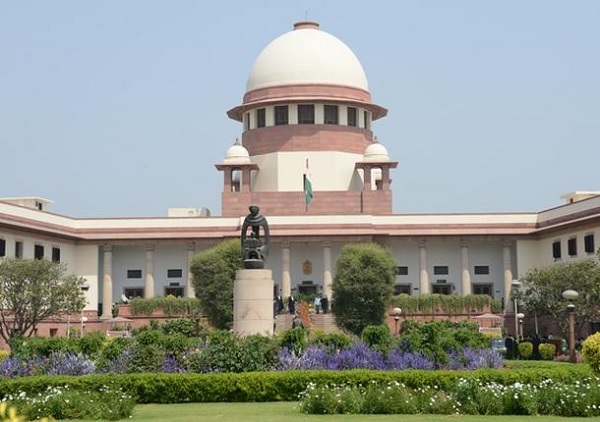
by admin | May 25, 2021 | Corporate, Corporate finance, News, Politics
 New Delhi : The Supreme Court on Tuesday sought response of the Centre and the Election Commission (EC) on a plea challenging changes to various statutes through two Finance Acts for issuance of electoral bonds for electoral funding.
New Delhi : The Supreme Court on Tuesday sought response of the Centre and the Election Commission (EC) on a plea challenging changes to various statutes through two Finance Acts for issuance of electoral bonds for electoral funding.
The bench of Chief Justice Dipak Misra, Justice A.M. Khanwilkar and Justice D.Y. Chandrachud sought responses on the plea by petitioner NGOs Association of Democratic Reforms (ADR) and the Centre for Public Interest Litigation (CPIL) who also sought direction that political parties must not be allowed to accept any cash donations.
The petitioner NGOs have challenged various amendments to the Companies Act, Income Tax Act, Representation of the People Act, Reserve Bank of India Act and the Foreign Contribution Regulations Act (FCRA) made through the Finance Act 2017-2018 and the Finance Act 2016-2017.
The petitioner NGOs have contended the import of these amendments was that corporate houses could make unlimited donations to political parties and need not even give details of such donations.
Besides, the annual contribution reports of political parties to be furnished to the Election Commission need not mention names and addresses of those contributing by way of electoral bonds, the petition said.
“This will have a major implication for transparency in political funding,” said counsel Prashant Bhushan appearing for the ADR and the CPIL.
Through the amendments under challenge, the earlier limit of 7.5 per cent of the company’s average three-year net profit for political donations has also been removed.
In other words, corporate houses can make unlimited political donations without divulging the name of political parties they are funding.
—IANS






